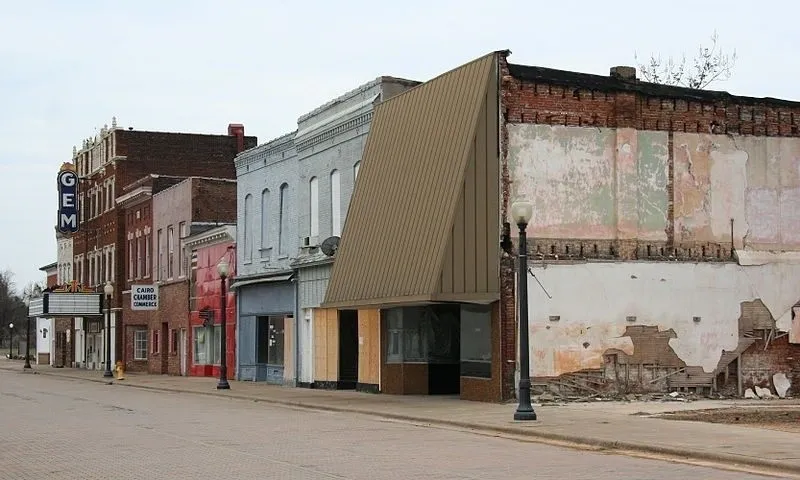Cairo, once a bustling town on the Mississippi River, now stands as a ghostly, deserted place, bearing the weight of its troubled past of racial violence. Situated at the confluence of the Mississippi and Ohio Rivers in flood-prone southern Illinois, Cairo enjoyed prosperity during the steamboat era. However, as railroads expanded across the nation, steamboat activity waned, though Cairo remained important as a crucial stop along various railway routes.


Today, a stroll or drive through Cairo reveals a hauntingly desolate scene. Once a vibrant downtown area, it now consists of dilapidated buildings with boarded-up windows and crumbling brick facades. Decades of decay have taken their toll on the business district, leaving it largely abandoned, with many structures either collapsed or demolished. This decline has spread into residential neighborhoods, gradually worsening over time.
The town’s economic struggles, compounded by its tumultuous history of racial tensions and recurrent flooding, have contributed to its decline. Following the Civil War Reconstruction, Cairo became a destination for formerly enslaved individuals seeking refuge. However, deep-seated racial divisions persisted, and as industries like shipping and ferrying declined, employment opportunities dwindled, exacerbating racial unrest.


The mid-1960s saw a tragic event unfold in Cairo, as the alleged killing of a young Black soldier while on leave sparked protests and riots, prompting the brief activation of the National Guard. In response, white residents formed a civilian militia called the “White Hats,” which unfortunately focused more on suppressing Black protesters than on fostering community improvement.
The culmination of racial tensions and misguided economic policies contributed to Cairo’s gradual decline over subsequent decades. Some Black residents sought opportunities in more progressive areas, while many business owners and major industries were forced to close due to financial hardships. As a result, the town’s population, which had peaked at over 15,000 in the 1920s, dwindled to 6,000 by the 1980s, and further decreased to approximately 2,000 residents by 2010.


Despite efforts by the local government to revitalize the city through racially integrated historic preservation initiatives, the results have been largely disappointing, with most endeavors proving unsuccessful. While a few cultural institutions, like the state-owned Victorian manors and the Cairo Public Library, have endured, the majority of the town remains abandoned, underscoring the difficulties in revitalizing Cairo’s once-vibrant community.






